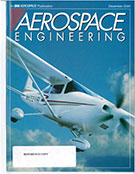Magazine

Automotive Engineering International 2006-03-01
2006-03-01
Hybridization gathers momentum Gasoline-electric hybrid vehicles continue to grow in popularity, with many incremental advances coming from Japanese OEMs and suppliers. Broadening telematics' reach More infotainment options pose many challenges. Nano goes macro While nanotechnology deals with materials at the minutest of levels, the auto industry has grand plans for its use in a multitude of areas. The transformation of testing Software is helping physical tests produce more accurate results more efficiently. Advancing crashworthiness simulation BMW worked closely with software developers at ABAQUS to produce a customized solution for virtual product development. Low-cost latitude Contrary to popular belief, 'low cost' does not automatically mean 'Chinese.' SAE 2006 World Congress Preview Toyota and host company BMW join Ford, General Motors, and Chrysler for a record number of OEMs on the floor at the April 3-6 event.



















